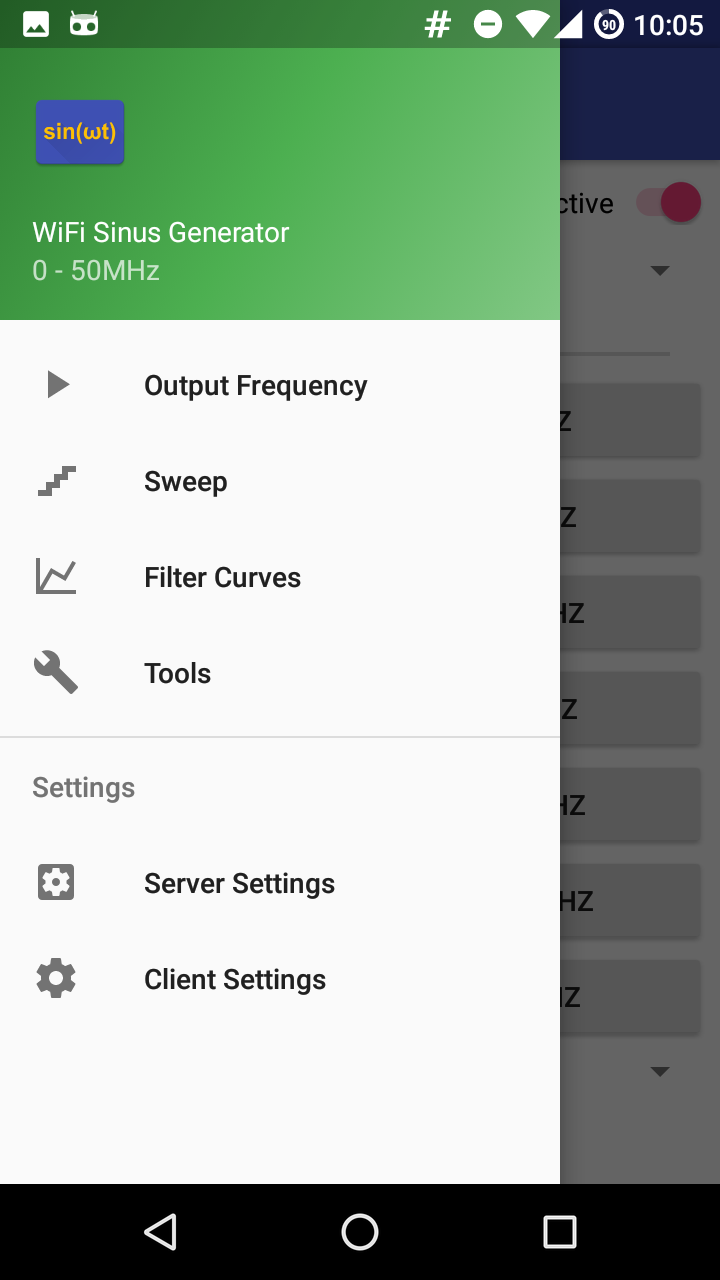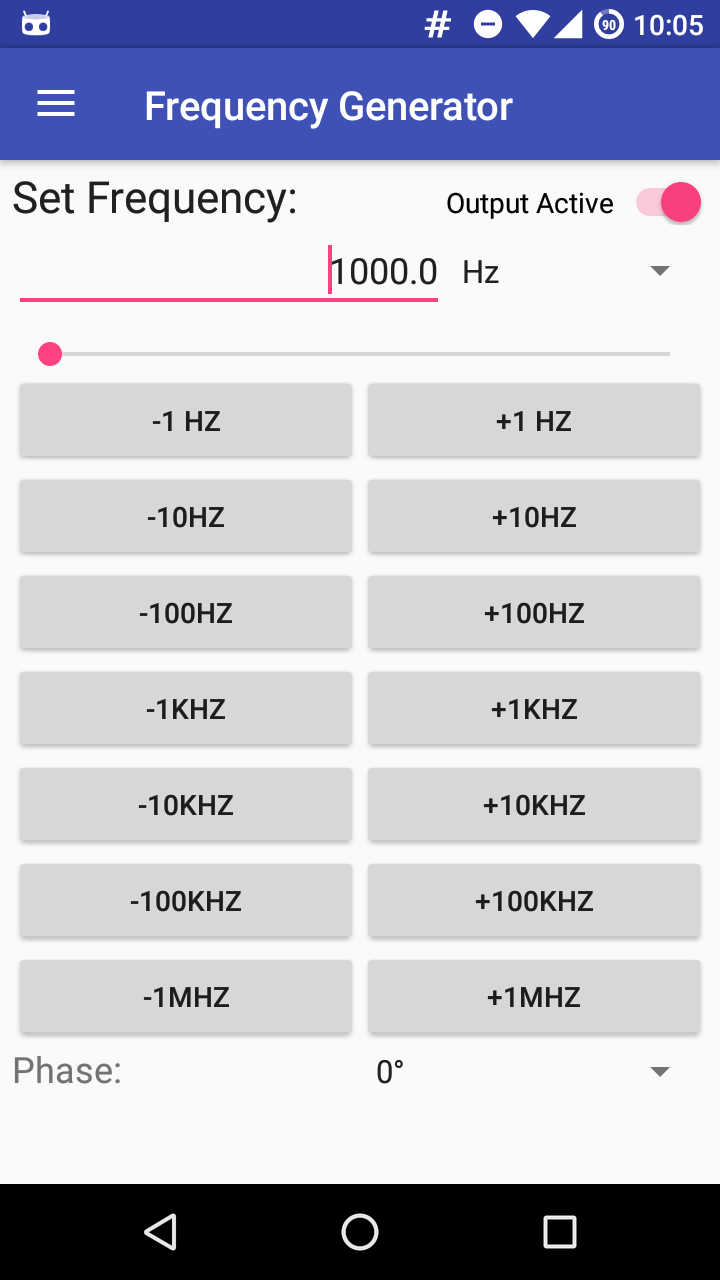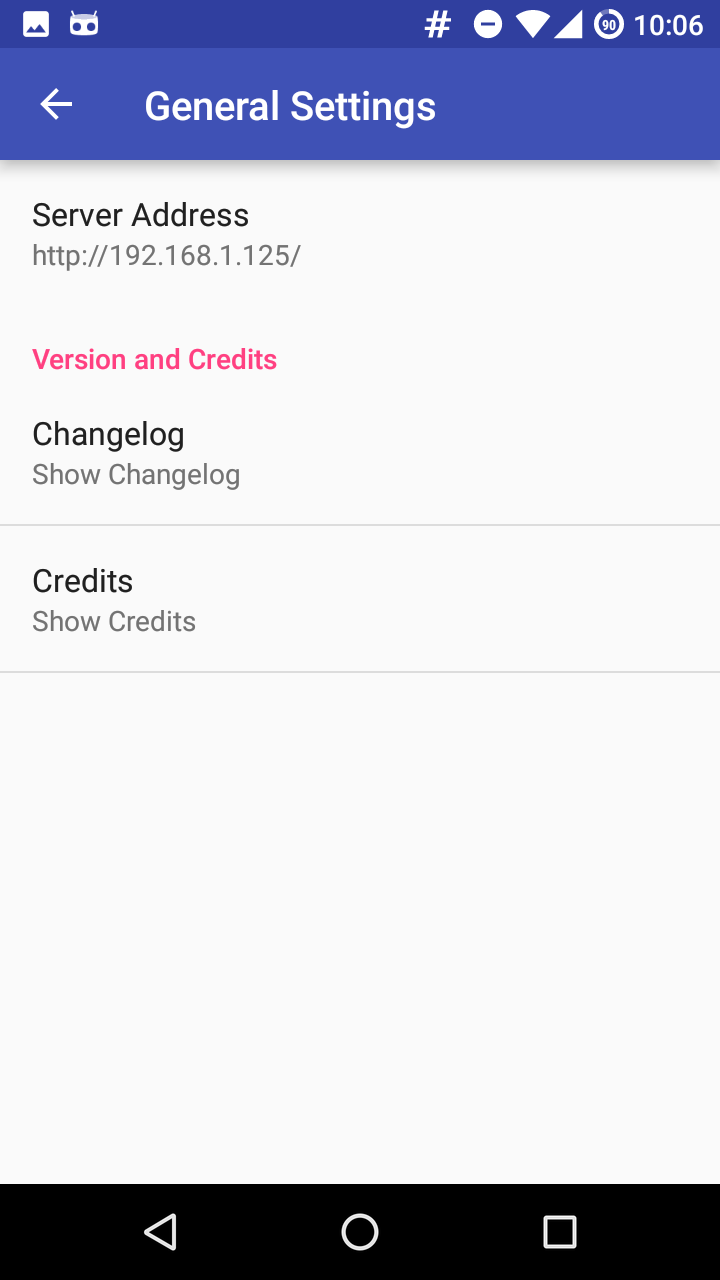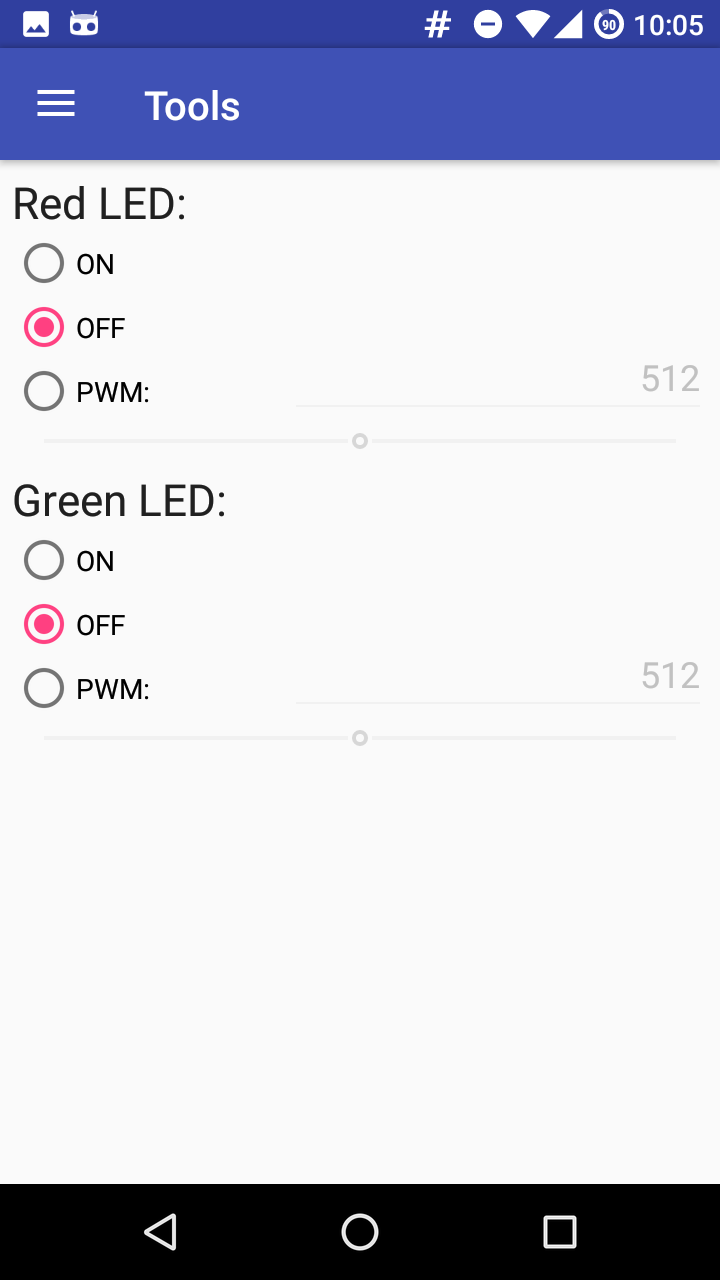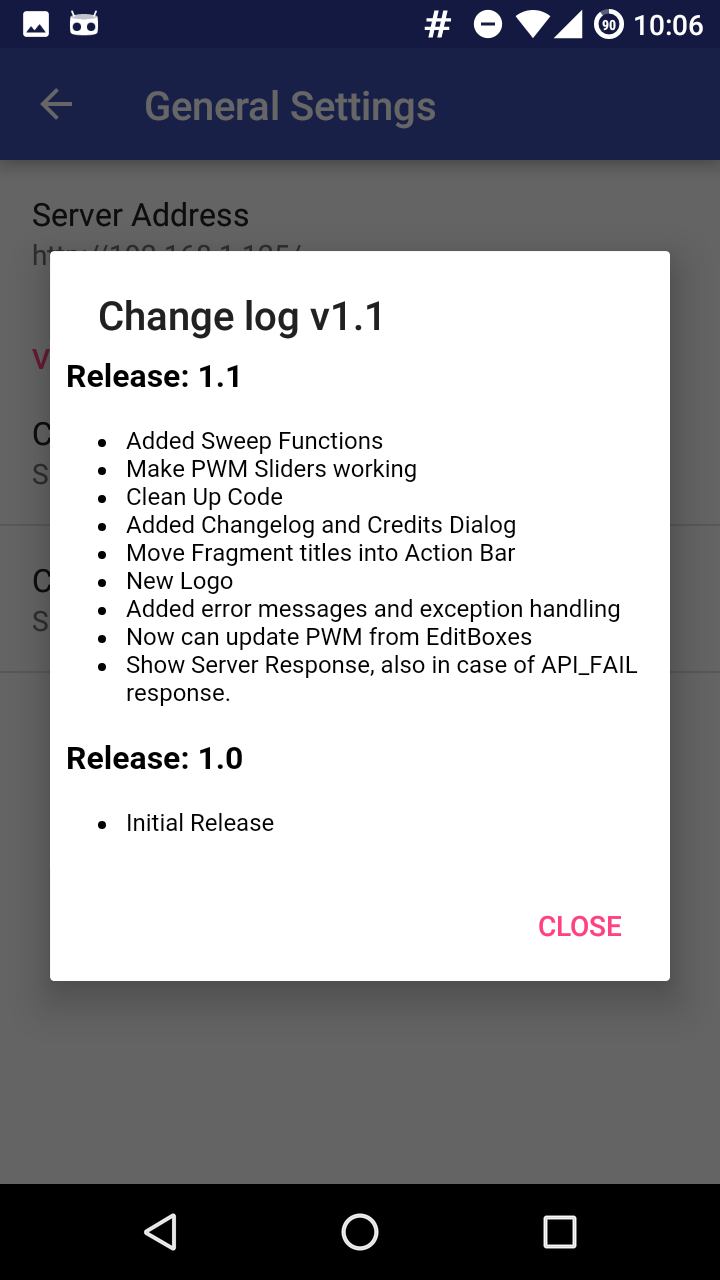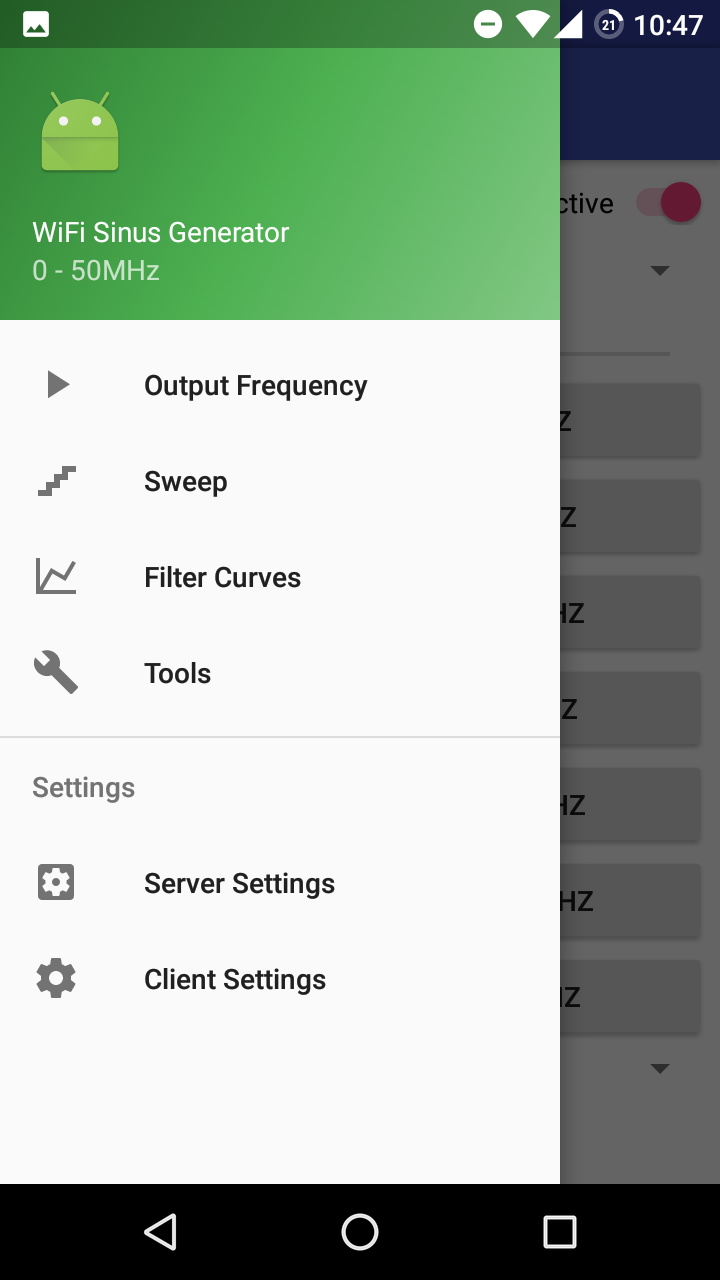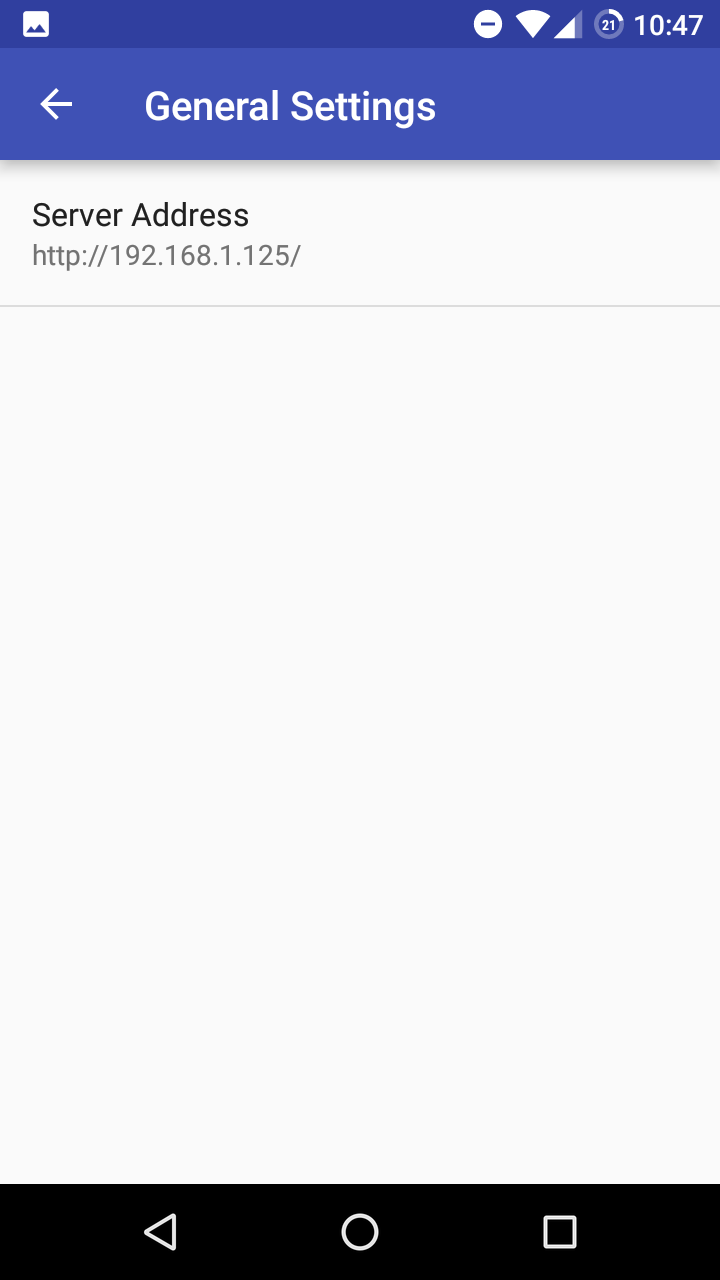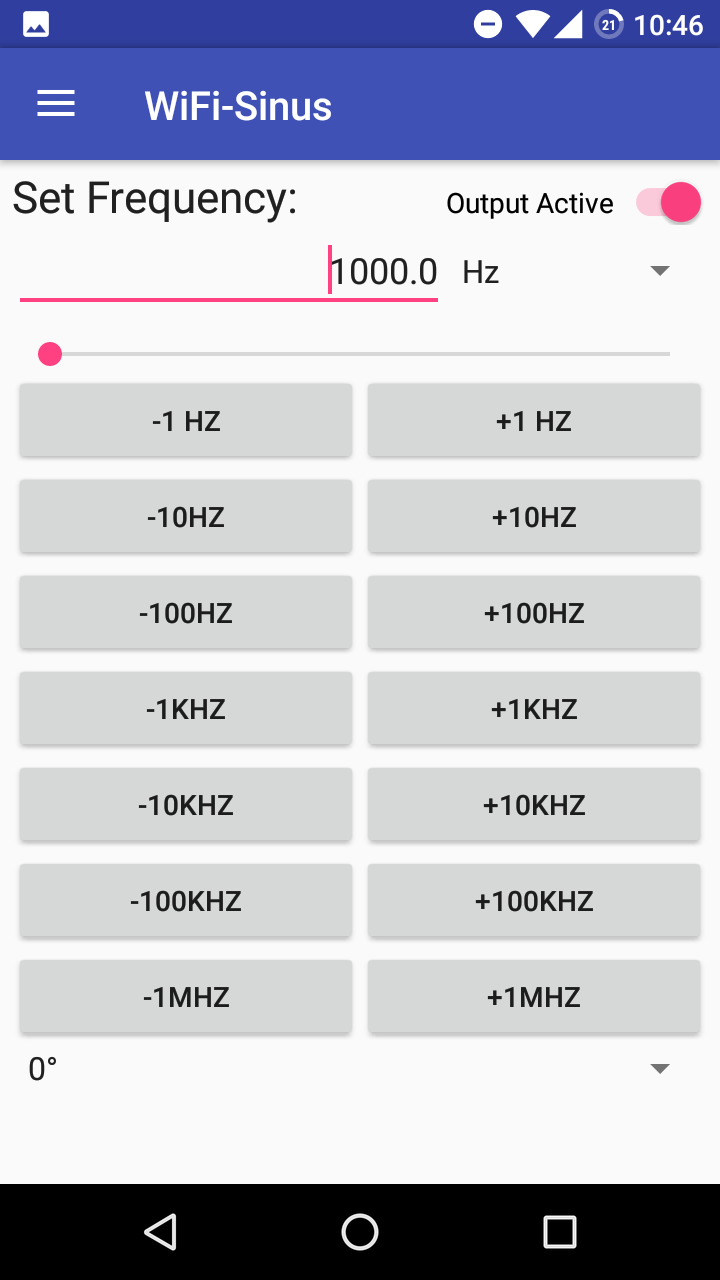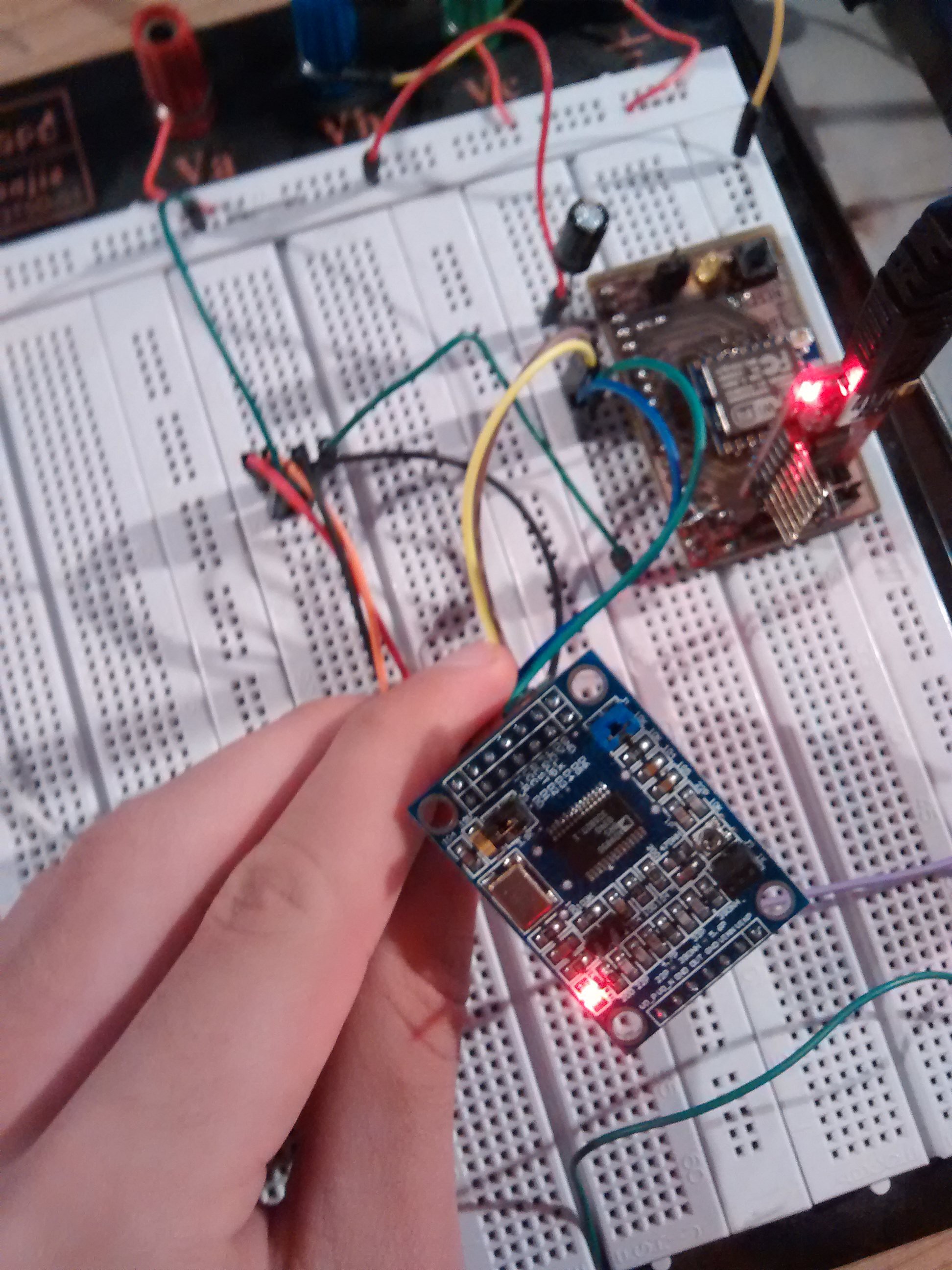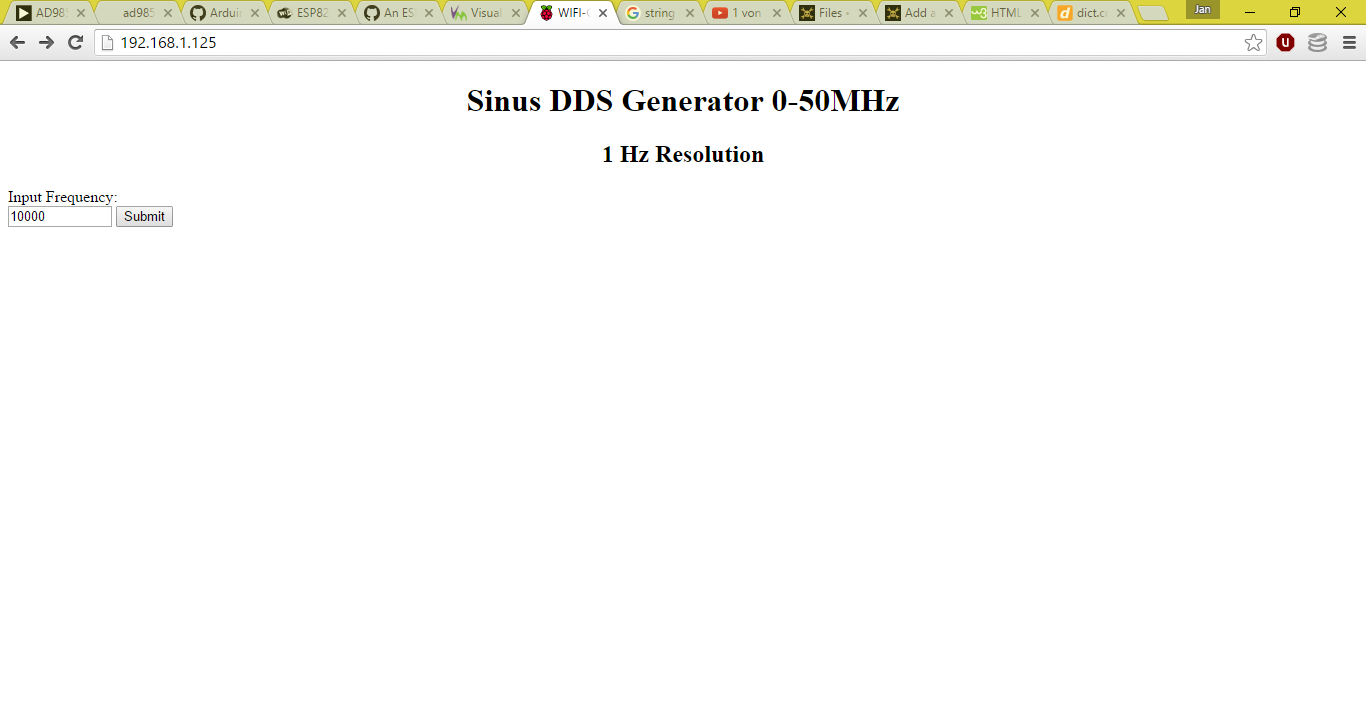-
Version 1.1 of Android app released!
08/16/2016 at 20:22 • 0 commentsHello everybody,
today I have released the Version 1.1 of the android app which you can use to control the WLAN Sinus Generator. It works on all android phones with Android 4.0 (Ice Cream Sandwich) and needs no permissions except Internet communication. You can find source (its under Apache License 2.0) and APKs here on Github.
Changelog:
- Added Sweep Function
- Make PWM Sliders working
- Clean Up Code
- Added Changelog and Credits Dialog
- Move Fragment titles into Action Bar
- New Logo
- Added error messages and exception handling
- Now can update PWM from EditBoxes
- Show Server Response, also in case of API_FAIL response
Screenshots (taken on a Moto G (1st gen.) with CM13 (Android 6.0):
![]()
![]()
![]()
![]()
![]()
![]()
-
Sweeping is working now!
08/11/2016 at 20:01 • 0 commentsToday I got the sweeping output working. I thought that the ESP8266 would be to slow for handling both WLAN/Web and changing the frequency, but it works awesome. (I think I have worked too much with these slow 8-bit arduinos :) ). I have finally uploaded the code for the ESP8266 here on Github . Its not so good documentated and not very pretty, but it works... I will clean up it in the next few days... If you want to test it, consult the schematic draft in the download sections for the wiring between AD9850 and ESP8266. In the config.h of the ESP8266 code you has to change the ssid and password to match your network.
Now im working on a nice frontend in the android app, I think this will be ready the next few days. Then I also want to test if my plan to use the sinus generator and the ADC of ESP8266 for measure filter curves, works...
-
First Screenshots of the Android App
08/09/2016 at 21:27 • 0 commentsThe last few days I worked on the android apps. With it you can control the frequency and phase output of the DDS Generator. In the Tool section you can activate or deactivate both leds.
The Code is licensed under the Apache License 2.0. You can find the source here: Github . Under Releases you can find an signed APK of the app.
Here are some screenshots:
![]()
![]()
![]()
![]()
-
First Test
08/03/2016 at 19:05 • 0 commentsFirst Test
Today I have build a working "proof-of-concept".
![]()
After I thought I had broken the AD9850 module, I found out that I only forgot to connect D0 and D1 to 5V line... Now the AD9850 is controllable from the ESP8266 via WLAN.
Now the ESP8266 connects to my WiFi and you can change the frequency via an very quick and dirty webpage... That you can see here:
![]()
When you type in your desired frequency, the ESP8266 will process it and changes the output frequency of the AD9850.
In the files you will find a early schematic draft that I used as basis for my experimentation setup.
Here can you see an video of my experimentation setup and some little tests of changing the frequency:
The next few days I will try to improve the setup and the webpage, also I want to start writing an Android app for controling the DDS. Furthermore I will test some HF amplifier circuits to improve the output amplitude. And last I will try to implementate the "wobble" function, so that you can plot filter curves of components like HF-Filters.
WLAN Sinus Generator
A Sinus (0-40MHz) generator controlable via WLAN, using AD9850 and ESP8266.
 Jan B.
Jan B.